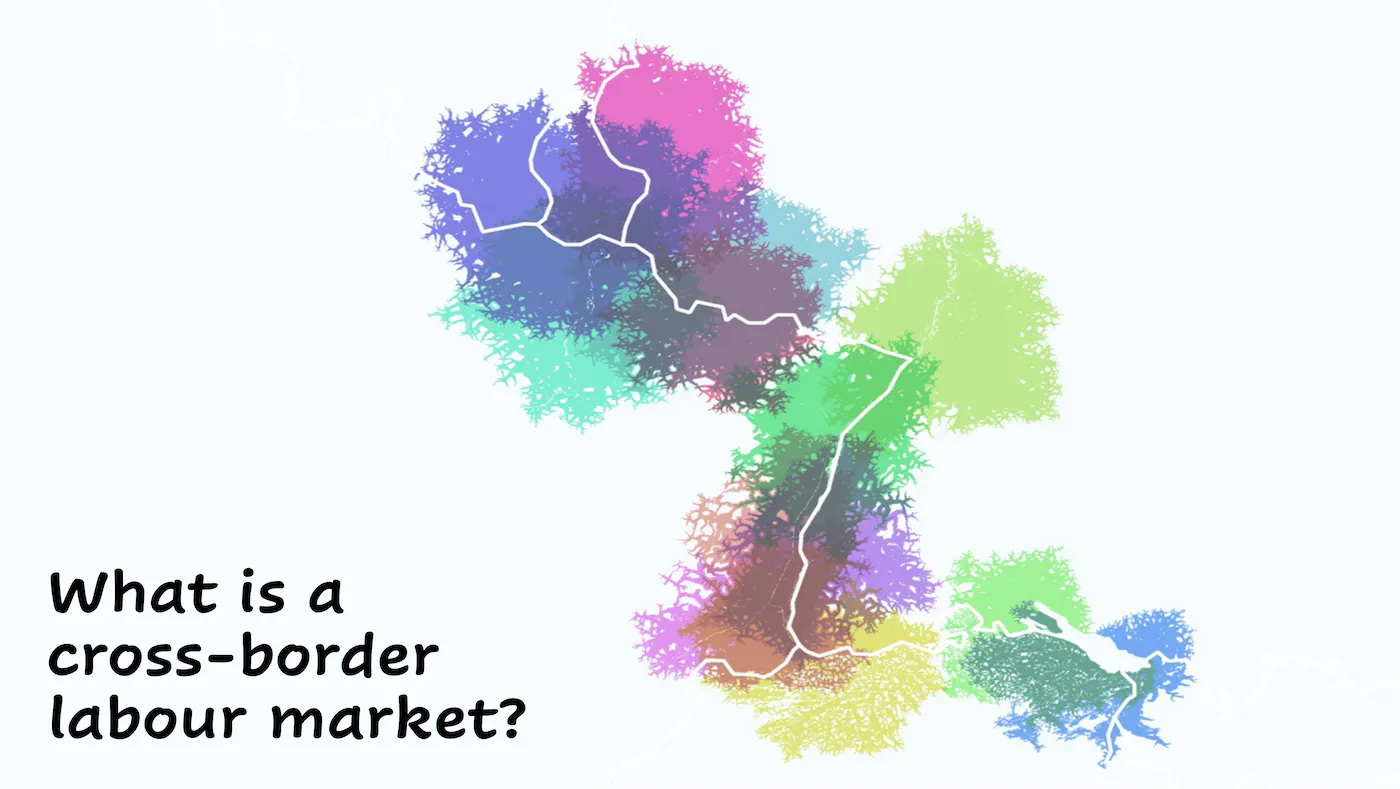What is a cross-border labour market?
December 2022

In an ideal Europe, commuting flows would be no different in cross-border regions than in any other area. We know that this is far from being the case. Language and culture barriers are only part of the reason why labour mobility primarily occurs within European countries. Borders are interfaces between national economic systems with different labour costs and wage levels. Different mismatches between skill offer and demand occur in each country. Despite numerous bilateral agreements, European cross-border workers need to overcome many administrative hurdles to pay their taxes, access public health insurance and contribute to pension schemes. In addition, intra-national mobility needs are often given priority when decisions are made on transport infrastructure investments and on public transport services.
It is therefore easy to understand why the European Commission pays specific attention to cross-border labour markets. Their development would be a proof that Single Market integration is effectively progressing. They would demonstrate some level of coordination between administrative and legal systems. Maybe most importantly, they would pay testimony to the fact that many mental barriers to living and working in different countries have been overcome. This is part of the reason why the border focal point of the European Commission’s “Futurium platform” will organise a conference entitled “Vibrant Cross-Border Labour Markets (Si apre in una nuova finestra)” in January 2023.
Discussions on cross border labour markets should be informed by evidence. Different challenges need to be overcome to produce such evidence. A first challenge, which is less trivial than one may think, is to answer the question “what is a cross-border labour market?” Is it an observable reality? Or rather a political project, whose spatial extent and potential for integration is in the eyes of the beholder? In the former case, it should be possible to delineate in the same way as any other labour market. In the latter case, the objective is rather to explore the feasibility and implications of different policy agendas.
Different patterns of cross-border commuting
Only a few European cross-border regions experience massive cross-border commuting flows. These are primarily observed around Luxembourg and Switzerland, with cities such as Geneva and Basel acting as attractors of commuters. In these cases, cross-border labour markets could theoretically be delineated using the “harmonised definition of urban areas (Si apre in una nuova finestra)” developed jointly by the OECD and by the European Commission in 2019. According to this approach, all local units with at least 15 % of their employed residents working in a city (or a set of cities linked by commuting flows) are part of its labour market (or “commuting zone”). However, this methodology has not been applied across national borders. In other words, all OECD/European Commission functional urban areas currently stop at national borders (Si apre in una nuova finestra). This is mainly because the variable availability of data on cross-border commuting makes it impossible to delineate cross-border labour markets in a consistent way across Europe. However, some national statistical institutes have delineated functional areas whose centre is partly or entirely located abroad. For example, in France, INSEE has delineated the functional areas (Si apre in una nuova finestra)of Basel – Saint-Louis, Geneva – Annemasse, Charleroi, Lausanne, Luxembourg, Monaco and Saarbrücken.
To read this post you'll need to become a member. Members help us fund our work to ensure we can stick around long-term.
See our plans (Si apre in una nuova finestra)
Sei già un affiliato? Accedi (Si apre in una nuova finestra)


